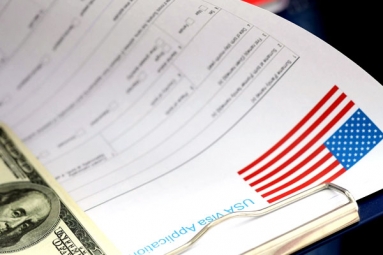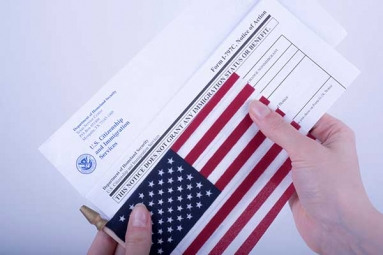
(Image source from: Malwarebytes Labs)
An increase in the investment required to obtain a conditional green card under the EB-5 visa programme seems inevitable as the number of Indians getting investment linked EB-5 visas, also known as “cash for green card,” has risen nearly four-fold in the past two years.
According to statistics issued by the United States Department of State, 585 such conditional green cards were issued to Indians during the 12-month period ending September 2018, as against 174 in fiscal 2017.
In the fiscal year 2016, just 149 conditional green cards were allotted to Indians, which reflects a massive increase of 293 percent over a two-year period.
In terms of a number of visas granted, India toppled South Korea and Taiwan to take the third spot behind China and Vietnam in fiscal 2018.
The United States EB-5 visa, an investment-linked visa, provides a method for eligible Immigrant Investors to become lawful permanent residents by investing at the minimum $1,000,000 to finance a business in the United States that will hire at least 10 American workers.
Scores of Indians over the few years, including those already working in the U.S., have been lining up to apply for EB-5, an investment-linked visa. The wait has borne aftermath, going by the huge jump in numbers.
Investments through regional centers that pool in money for various projects, especially in the real estate sector, are more popular than setting up one’s own operations. After holding a conditional green card for 21 months, an investor can apply for permanent residence or green card subject to fulfillment of conditions.
“Extension of H-1B visas are also being subject to the same rigorous scrutiny with denial rates on the rise,” says Mitchell L Wexler, partner, Fragomen, a global immigration law firm.
“Also boosting the demand is the fact that work authorizations available to a certain category of H-1B spouses will be rescinded. Children of several H-1B workers, especially those who are in the queue for a green card under the employment category, are also aging out. Post 21 years, they can no longer hold the dependent H-4 visa, but need to migrate to another visa (say student visa) or self-deport to India,” says Wexler.
“Given the backlog which Indian investors could face in the near future under EB-5, investments must be planned in advance to protect the child’s interest,” he adds.
According to a report in Times of India, even affluent families based in India tend to gift the investment sum to a child studying in the U.S. After completion of studies, the EB-5 visa enables him or her to work without having to throw the hat in an H-1B lottery.
By Sowmya Sangam







